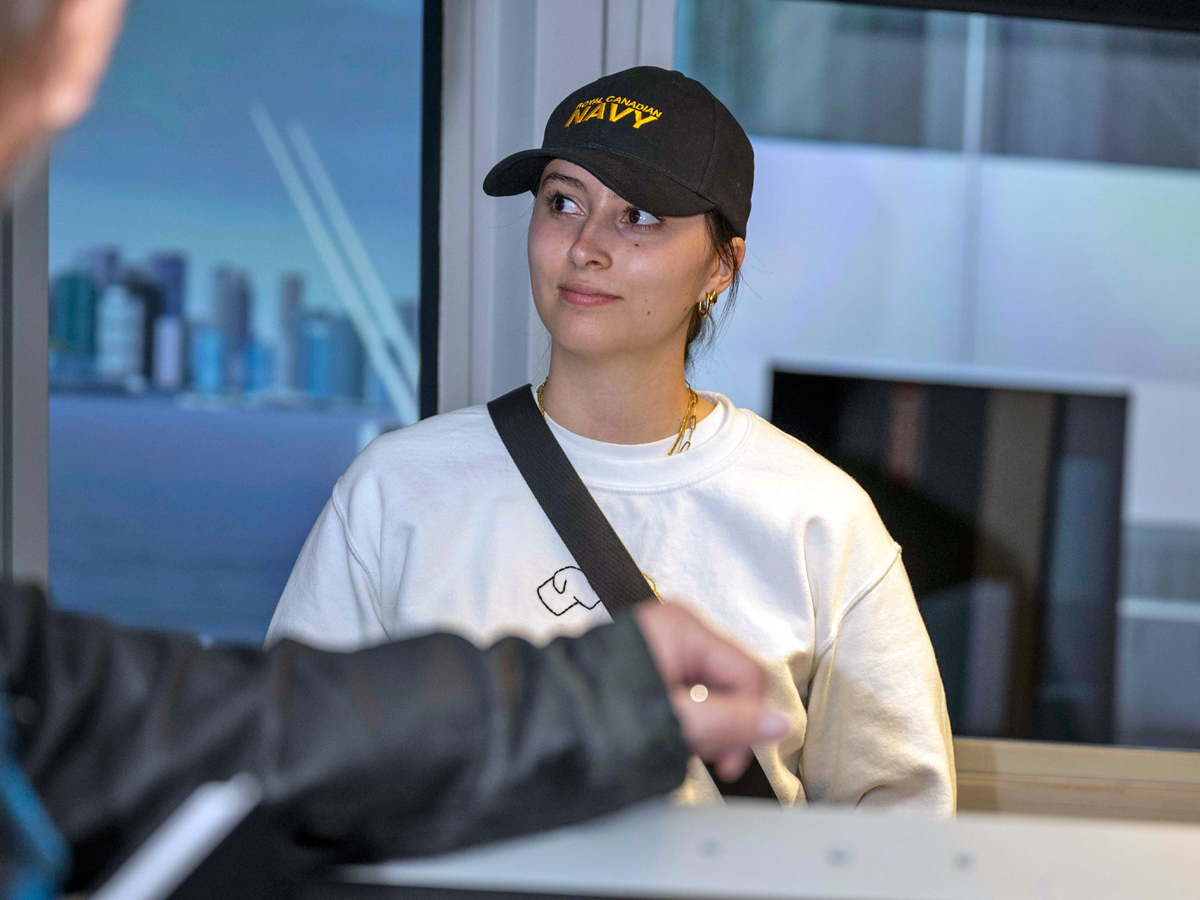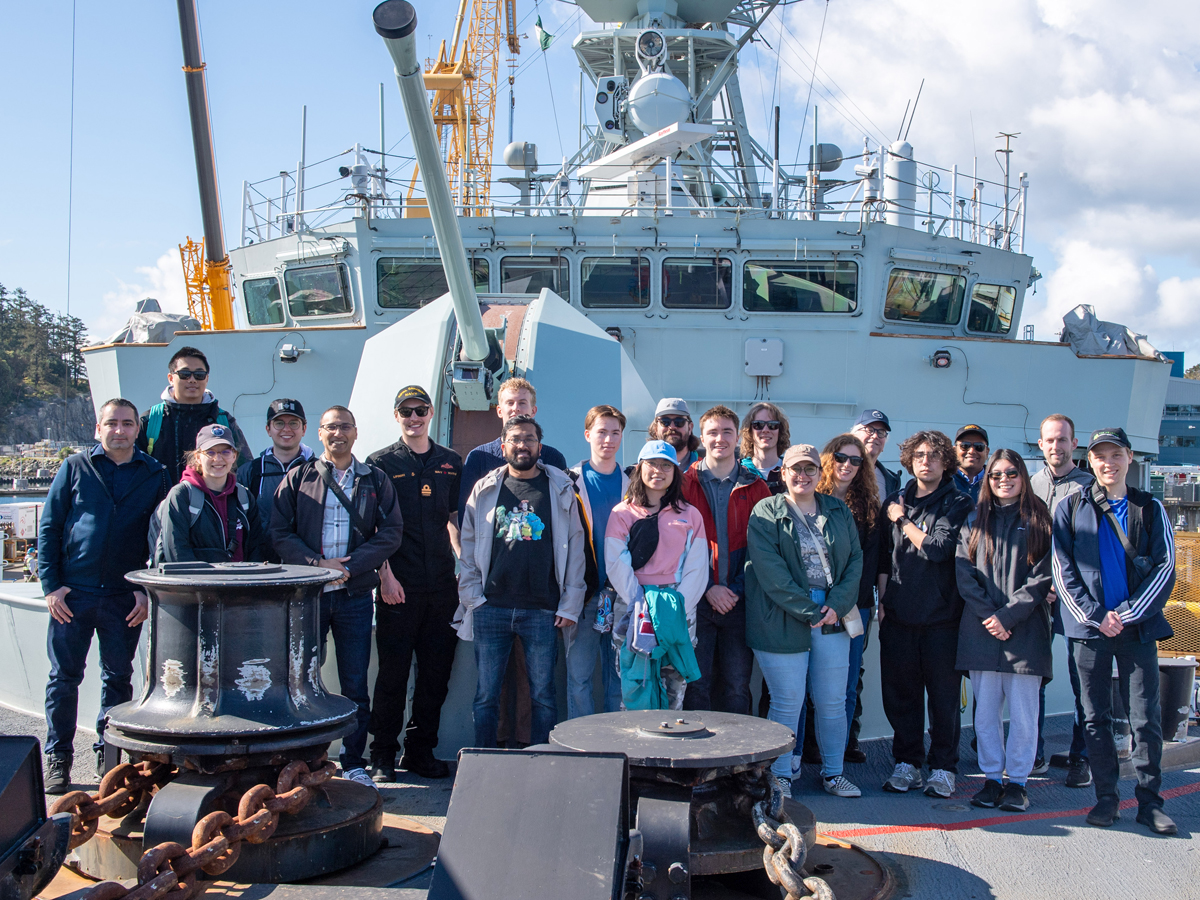Students become sailors-for-a-day
By Lookout Production on May 06, 2024 with Comments 0

Claire Dickson, University of Calgary student, visited CFB Esquimalt as part of the Canadian Students at Sea program. Photo: Corporal Tristan Walach, MARPAC Imaging.
Peter Mallett,
Staff writer
—
Learning from textbooks in a university classroom is one thing, but getting a briefing straight from the source is definitely another – and one University of Calgary student can attest to that. Claire Dickson hopes to land a career in global affairs, defence or security sectors.
She is currently writing her thesis on how advanced technology and mass surveillance impact the perpetration and prevention of genocide in the 21st century, with a focus on the alleged genocide of Uyghurs and other Ethnic Turks in China’s Xinjiang region.
But instead of hitting the library shelves back home, she was fortunate to attend a briefing about China’s activity in the South China Sea by Brett Witthoeft, a Senior Analyst at Maritime Forces Pacific N39 International Engagement Office.
“Brett’s briefing was fascinating since my research ties to what is being moved through that region, including goods produced that will pass through the South China Sea,” she said. “This provided a better understanding of how China is impacting the Indo-Pacific [region] as a whole.”
The briefing was part of the Canadian Students at Sea program, a new interactive course of study with the Royal Canadian Navy (RCN). Founded in 2020, the program allows Canadian secondary and post-secondary students to understand the RCN through an immersive, hands-on experience at sea and ashore. Dickson was among the 15 students from the University of Calgary, Centre for Military and Strategic Studies (CMSS), joined by 16 students from the University of Alberta‘s Engineering Department who relished their visit to CFB Esquimalt on Apr. 15-16.
Their at-sea part included a sail aboard HMCS Yellowknife and HMCS Edmonton. Lieutenant (Navy) Rodney Newcombe, HMCS Yellowknife Combat Systems Engineering Officer, said the students were genuinely interested in the Navy and had a lot of good questions.“
Our sail aboard Yellowknife provided the students a great opportunity to interact with the majority of the ship’s company on a level that can’t be achieved on shore,” said Lt(N) Newcombe.
The students received a guided tour of the vessels and met many trades of each department onboard, including Maritime Technicians, Naval Warfare Officers, Cooks, Boatswains, Naval Communicators and Naval Combat Information Operators (NCIOP). The ship’s company conducted maneuvering demonstrations, a person overboard exercise, damage control and firefighting.
Alongside components of the visit included tours of the Fleet Diving Unit (Pacific), Naval Personnel Training Group’s Collier Building and Bridge Simulator, Fleet Maintenance Facility Cape Breton, Albert Head’s Naval Electronic Systems Test Range (Pacific), CFB Esquimalt Naval and Military Museum.
Dickson says the visit went above and beyond her expectations. “I was pleasantly surprised with how much of the Base we could see; having the opportunity to be surrounded by complex instruments, cyberwarfare capabilities and hearing how they are operationalized was highly interesting,” she said.

Canadian Students at Sea (CSaS) take a tour onboard HMCS Ottawa, and pose for a group photo on the foc’sle. Photo: Sailor 1st Class Brendan McLoughlin
Filed Under: News Release • Top Stories
About the Author:





